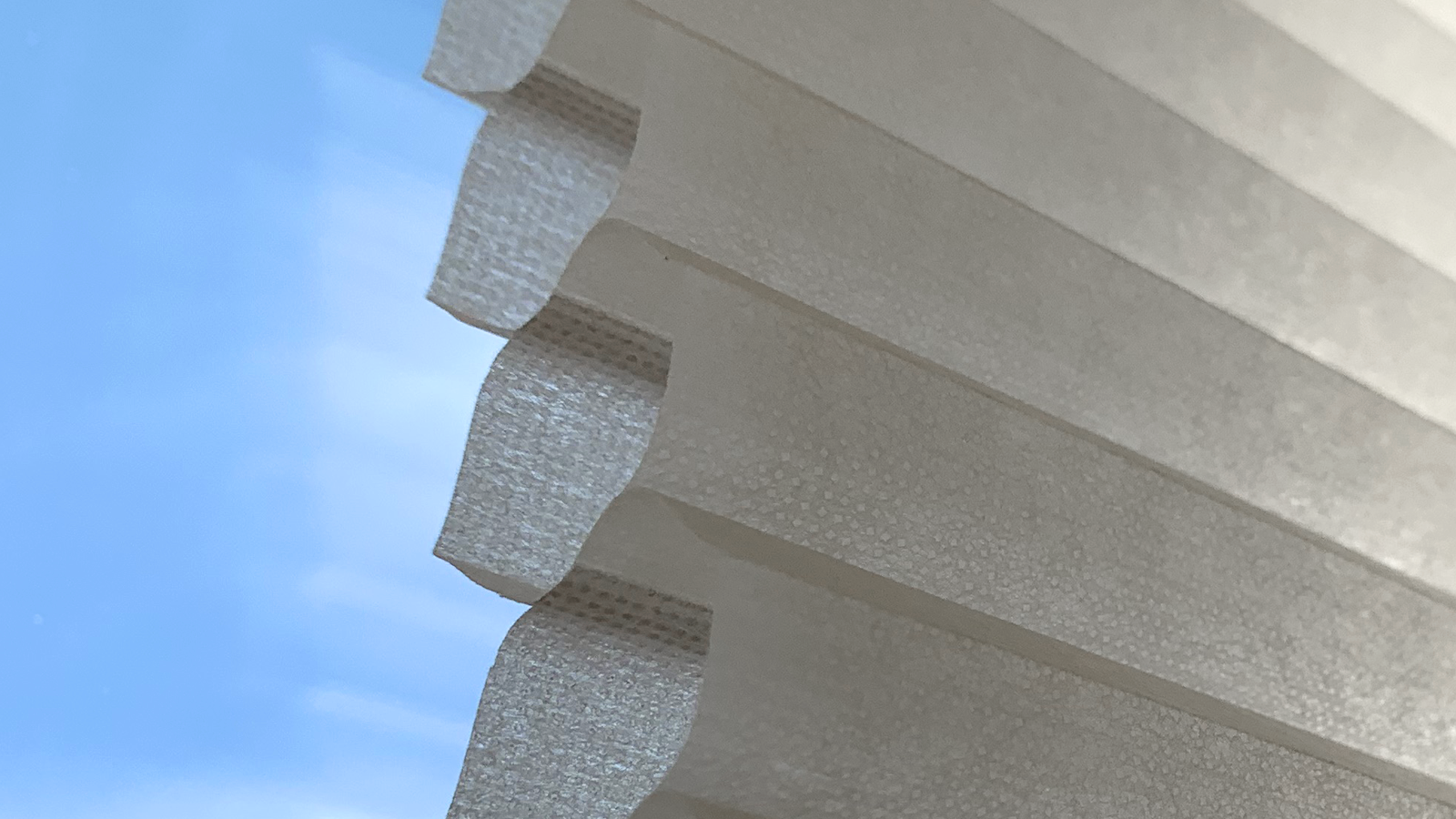Material selection plays a critical role in designing cellular shades that effectively provide insulation and regulate indoor environments. This article will explore how material properties impact a cellular blind's effectiveness in controlling brightness and temperature, ultimately enhancing comfort and minimizing dependence on HVAC systems.
Windows and Energy Efficiency
Windows are essential for natural light, views, and ventilation but can also contribute to energy loss. Uncovered windows, particularly single-pane ones, can lead to significant energy leakage, increasing reliance on heating and cooling systems. Window coverings, especially automated shades, offer an effective solution to regulate a home's temperature, natural light and, most importantly, energy consumption.
Cellular Shades: A Cost-Effective and Efficient Solution
Cellular shades are known for their insulating properties due to their unique honeycomb structure. The cellular design traps air within the shade's layers, creating a barrier against heat transfer. This structure helps regulate indoor temperatures by reducing heat gain in the summer and heat loss in the winter. Mado Dynamic, a company working to revolutionize the window covering industry, offers cost-effective, automated, and easy-to-install cellular shades that provide significant energy savings. These shades offer an affordable alternative to traditionally expensive automated shades.
Material Properties and Their Impact on Performance
The choice of materials is critical in determining the effectiveness of cellular shades. The sources emphasize the importance of considering both the optical and thermal properties of the materials used.
- Thermal Transmittance (U-value): This value measures the rate of heat transfer through a material. A lower U-value indicates better insulation. Selecting materials with lower U-values for cellular blinds will enhance their ability to prevent heat loss in winter and heat gain in summer. The construction details of the shade, including the number of cells and their size, also influence the U-value.
- Solar Heat Gain Coefficient (SHGC): SHGC quantifies the amount of solar heat allowed to pass through a material. Lower SHGC values are desirable for controlling solar heat gain during summer. Choosing materials with appropriate SHGC values for cellular shades helps regulate indoor temperatures and reduces cooling loads.
- Visible Transmittance (Tvis): Tvis indicates the amount of visible light that can pass through a material. Cellular blinds can be designed with varying degrees of Tvis to control brightness and glare. Light-filtering fabrics allow natural light while maintaining privacy, whereas blackout fabrics completely block light for optimal darkness.
- Color and Reflectivity: The color and reflectivity of the shade material also influence its performance. Lighter colors tend to reflect more solar heat, reducing heat gain. Darker colors absorb more heat, potentially increasing heat gain.
Comparing insulative properties of dynamic shades during a 100℉ heatwave, influenced by material selection.

Dynamically Controlled Shades: Optimizing Comfort and Efficiency
Dynamically controlled shades, like Mado Dynamic, leverage automation to maximize the benefits of cellular blinds. By integrating with smart home systems, these shades respond to temperature fluctuations and the sun's position, adjusting their position to regulate brightness and temperature automatically.
- Minimizing HVAC Reliance: Dynamic control allows shades to automatically adjust throughout the day, minimizing solar heat gain when cooling is needed and maximizing solar heat gain when heating is desired. This proactive approach reduces reliance on HVAC systems, leading to energy savings and lower utility bills.
- Enhanced Comfort: Dynamically controlled shades help maintain a comfortable indoor environment by preventing temperature swings and glare. They can create a more comfortable and productive living or working space by adapting to changing conditions.
- Daylight Optimization: Dynamic control systems can be programmed to optimize daylight utilization while minimizing glare. By raising shades during daylight hours, these systems reduce the need for artificial lighting, further contributing to energy savings and creating a healthier indoor environment with access to natural light.
Conclusion
Proper material selection is critically important in designing effective cellular blinds. The thermal and optical properties of the materials used significantly impacts a shade's ability to insulate and regulate indoor environments. Dynamically controlled shades enhance these benefits by automatically adapting to changing conditions, optimizing comfort, minimizing HVAC reliance, and maximizing energy savings.





Share: